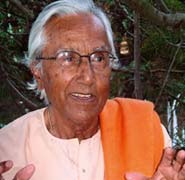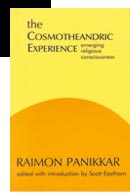

site officiel


The Cosmotheandric Experience: Emerging religious consciousness
For Panikkar, the human adventure on Earth cannot be separated from the adventure of the whole of reality. For centuries we have seen ourselves as superior to the rest of reality, but now we find ourselves in a universe that, as described by modern science, seems to ignore us completely. Today, though, we are starting to realize that “our relation with the Earth is part of our self-understanding”. “Heaven and Earth share the same destiny”.
Modern culture has been through an “experience of excruciating isolation and solitariness”, but now it is starting to rediscover the interdependence of all that is. “All the forces of the universe… are intertwined”, to the extent that “individualistic souls do not exist: we are all interconnected, and I can reach salvation only by somehow incorporating the entire universe in the enterprise”. We must concentrate on “bringing to completion the microcosm that is Man, both individually and collectively: mirroring and transforming the microcosm altogether”, with “full participation in the realization of the universe”. We are called to overcome the dualisms of our habitual, desacralized experience of reality: “the chasm between the material and the spiritual and, with this, between the secular and the sacred, the inner and the outer, the temporal and the eternal”. Every person is “a knot in the net of relationships… reaching out to the very antipodes of the real. An isolated individual is incomprehensible… Man is only Man with the sky above, the Earth below, and his fellow beings all around”.
The first part of The Cosmotheandric Experience, “Colligite Fragmenta: For an Integration of Reality”, describes “three kairological moments of consciousness” and formulates the intuition that kosmos, theos and anthropos cannot be conceived separately. “The cosmotheandric vision does not gravitate around a single point, neither God nor Man nor World, and in this sense it has no center. The three coexist, they interrelate and may be hierarchically constituted or coordinated… but they cannot be isolated, for this would annihilate them”.
The second part, “The End of History” analyzes the threefold structure of human time-consciousness by distinguishing a nonhistorical consciousness, a historical consciousness, and a transhistorical consciousness that is quietly arising in our time. The book concludes with the epilogue “Anima Mundi, Vita Hominis, Spiritus Dei”, stating at the outset that “the Earth is alive” and inviting us to overcome the dichotomy between so-called “nature-mysticism” and “theistic mysticism”, for “the entire reality is committed to the same unique adventure”.
translation from Spanish
